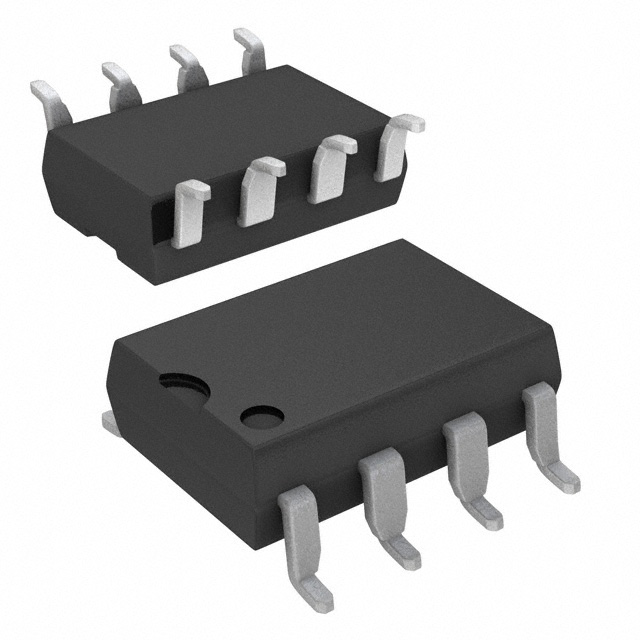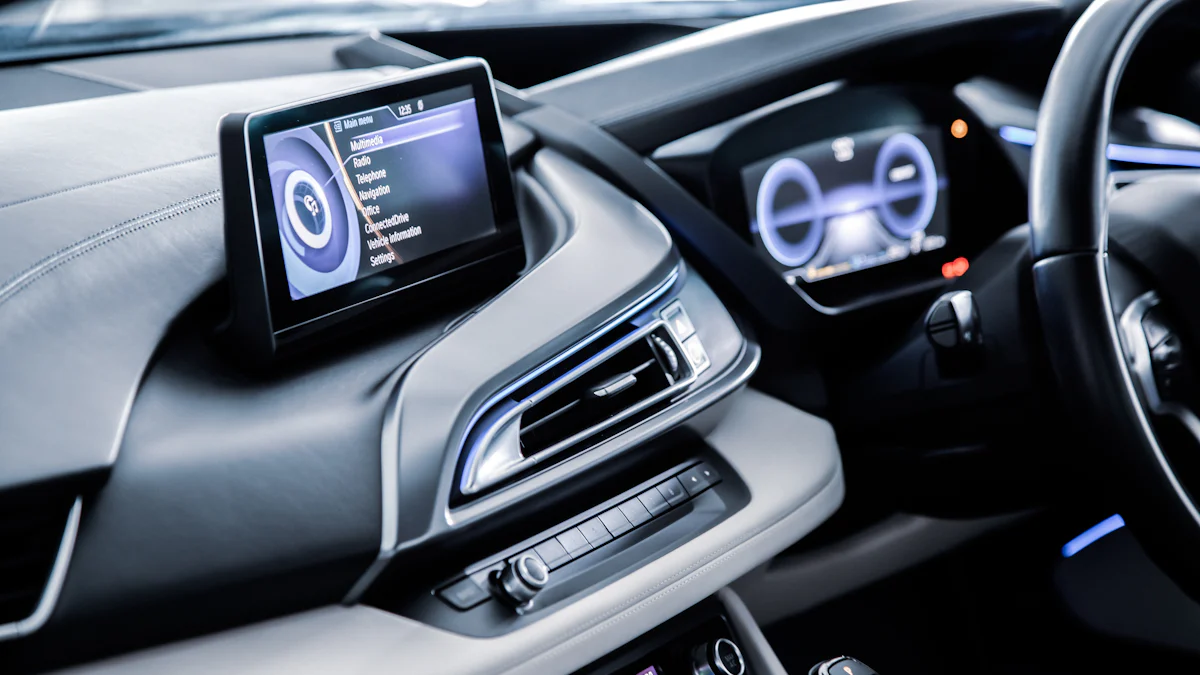Understanding the ISO1050DUBR CAN Transceiver for Automotive Use

CAN transceivers are essential in automotive applications, facilitating efficient communication between various vehicle components. The ISO1050DUBR model, developed by TI, is notable for its high-speed signal isolation capabilities. This CAN transceiver not only complies with the ISO11898-2 standard but also provides robust protection against noise currents, thereby safeguarding sensitive circuitry. The global market for automotive CAN transceivers is experiencing rapid growth, with projections indicating an increase from USD 4.28 billion in 2023 to USD 7.29 billion by 2031. For more detailed specifications, visit https://www.alldatasheet.com/datasheet-pdf/view/29.
Introduction to CAN Transceivers
What is a CAN Transceiver?
A CAN Transceiver serves as a crucial component in automotive networks. It facilitates communication between various electronic control units (ECUs) within a vehicle. By converting digital signals from a microcontroller into the differential signals required for the CAN bus, it ensures seamless data exchange.
Basic Functionality
The primary function of a CAN Transceiver involves transmitting and receiving data over the CAN bus. It converts the logic level signals from the CAN controller to the differential signals on the bus and vice versa. This conversion allows for robust communication even in electrically noisy environments. The ISO1050DUBR model, developed by TI, exemplifies this functionality with its high-speed signal isolation capabilities.
Importance in Automotive Networks
In automotive networks, the CAN Transceiver plays a pivotal role. It enables communication between different vehicle systems, such as the engine control unit, transmission, and braking systems. This communication is vital for the vehicle's overall performance and safety. The ISO1050DUBR model, with its high-speed signal isolation, enhances the reliability of these networks by providing robust protection against noise currents.
Overview of the ISO1050DUBR Model
The ISO1050DUBR model stands out in the realm of CAN transceivers due to its unique features and high-performance capabilities. It is designed to meet the demands of various applications, including automotive, industrial, and medical systems.
Manufacturer Background
TI, or Texas Instruments, manufactures the ISO1050DUBR. Known for their innovation and quality, TI has a long-standing reputation in the electronics industry. Their products, including the ISO1050DUBR, are renowned for their reliability and performance in demanding environments.
Unique Features of ISO1050DUBR
The ISO1050DUBR offers several unique features that make it an ideal choice for automotive applications:
High-Speed Signal Isolation: It provides galvanic isolation up to 2500V RMS, ensuring safe and reliable data communication.
Robust Noise Immunity: The transceiver effectively prevents noise currents from interfering with sensitive circuitry.
Integrated Protection Features: It includes built-in mechanisms to protect against voltage spikes and other electrical disturbances.
These features make the ISO1050DUBR a versatile and efficient solution for various applications. For more detailed specifications, visit https://www.alldatasheet.com/datasheet-pdf/view/29.
Technical Specifications of ISO1050DUBR

Electrical Characteristics
Voltage and Current Ratings
The ISO1050DUBR CAN transceiver operates efficiently within specific voltage and current parameters. It supports a wide range of supply voltages, typically from 4.5V to 5.5V. This range ensures compatibility with various automotive systems. The device can handle a maximum bus voltage of -27V to 40V, providing robust protection against voltage fluctuations. The current consumption remains low, which contributes to energy efficiency in automotive applications.
Temperature Range
Temperature resilience is crucial for automotive components. The ISO1050DUBR excels in this aspect, operating reliably within a temperature range of -55°C to 105°C. This wide range ensures that the transceiver performs optimally in diverse environmental conditions, from extreme cold to intense heat. Such adaptability makes it suitable for use in various automotive settings, including under-the-hood applications.
Physical Characteristics
Package Type
The ISO1050DUBR comes in a compact package that facilitates easy integration into automotive systems. It is available in an 8-pin SOIC (Small Outline Integrated Circuit) package. This package type offers a balance between size and functionality, making it ideal for space-constrained environments. The small footprint allows for efficient use of PCB space, which is often limited in automotive designs.
Pin Configuration
Understanding the pin configuration of the ISO1050DUBR is essential for proper installation and operation. The transceiver features a straightforward 8-pin layout, which simplifies the connection process. Each pin serves a specific function, such as power supply, ground, CANH, and CANL. This clear configuration ensures that users can easily integrate the transceiver into existing systems without complications.
For more detailed specifications, visit https://www.alldatasheet.com/datasheet-pdf/view/29.
Features of the ISO1050DUBR
Enhanced Performance Features
Speed and Efficiency
The ISO1050DUBR, developed by TI, excels in speed and efficiency. This CAN Transceiver supports data rates up to 1 Mbps, ensuring rapid communication between vehicle components. High-speed signal isolation enhances performance by maintaining data integrity even in electrically noisy environments. This feature proves crucial in automotive applications where timely data exchange is vital for system functionality.
Noise Immunity
Noise immunity stands as a significant advantage of the ISO1050DUBR. TI designed this CAN Transceiver to prevent noise currents from disrupting sensitive circuitry. The high-speed signal isolation capability ensures that external electrical disturbances do not affect the transceiver's operation. This robust noise immunity makes the ISO1050DUBR suitable for harsh automotive environments, where electromagnetic interference is common.
Safety and Reliability
Built-in Protection Mechanisms
Safety and reliability are paramount in automotive systems. The ISO1050DUBR incorporates built-in protection mechanisms to safeguard against voltage spikes and other electrical disturbances. TI engineered this CAN Transceiver to handle bus voltages ranging from -27V to 40V, providing robust protection. These features ensure that the transceiver operates safely under various conditions, enhancing the overall reliability of automotive networks.
Compliance with Automotive Standards
Compliance with automotive standards is essential for any component used in vehicles. The ISO1050DUBR meets the ISO11898-2 standard, ensuring compatibility with other automotive systems. TI's commitment to quality and performance guarantees that this CAN Transceiver adheres to industry standards. This compliance ensures that the ISO1050DUBR integrates seamlessly into existing automotive networks, providing reliable communication.
For more detailed specifications, visit https://www.alldatasheet.com/datasheet-pdf/view/29.
Applications in Automotive Industry

Common Use Cases
In-Vehicle Networking
In modern vehicles, in-vehicle networking plays a crucial role in ensuring seamless communication between various electronic control units (ECUs). The ISO1050DUBR, developed by TI, serves as a vital component in these networks. It facilitates high-speed data exchange, which is essential for the efficient operation of systems such as engine management, transmission control, and infotainment. The high-speed signal isolation provided by the ISO1050DUBR ensures that data integrity is maintained even in electrically noisy environments, making it an ideal choice for automotive applications.
Diagnostic Systems
Diagnostic systems in vehicles rely heavily on accurate and reliable data transmission. The ISO1050DUBR CAN Transceiver enhances these systems by providing robust communication capabilities. It allows for real-time monitoring and diagnostics of vehicle performance, enabling quick identification and resolution of issues. The transceiver's ability to handle differential transmission ensures that diagnostic data remains accurate and unaffected by external noise. This feature is particularly beneficial in maintaining the safety and efficiency of automotive systems.
Benefits in Automotive Systems
Improved Communication
The ISO1050DUBR significantly improves communication within automotive systems. Its high-speed signal isolation capability allows for rapid data transfer between different vehicle components. This speed is crucial for systems that require immediate response, such as braking and stability control. By ensuring that data is transmitted quickly and accurately, the ISO1050DUBR enhances the overall performance and safety of the vehicle.
Enhanced System Integration
System integration in vehicles becomes more efficient with the use of the ISO1050DUBR. Its compatibility with various automotive standards, including ISO11898-2, ensures seamless integration into existing networks. The transceiver's robust design and high-speed signal isolation make it suitable for a wide range of applications, from in-vehicle networking to diagnostic systems. This versatility allows manufacturers to streamline the integration process, reducing time and costs associated with system development.
For more detailed specifications, visit https://www.alldatasheet.com/datasheet-pdf/view/29.
FAQs and Additional Information
Common Queries
Installation Guidelines
Installing the ISO1050DUBR CAN Transceiver requires careful attention to detail. Engineers should ensure that the transceiver is correctly aligned with the circuit board's layout. The 8-pin SOIC package simplifies the installation process, but precision remains crucial. Proper grounding and power supply connections are essential to maintain the high-speed signal isolation capabilities. Texas Instruments (TI) provides comprehensive datasheets and application notes to guide users through the installation process. For more detailed specifications, visit https://www.alldatasheet.com/datasheet-pdf/view/29.
Compatibility with Other Systems
The ISO1050DUBR demonstrates excellent compatibility with various automotive systems. Its design adheres to the ISO11898-2 standard, ensuring seamless integration into existing networks. This CAN Transceiver supports a wide range of voltage levels, making it suitable for diverse applications. Engineers can confidently incorporate the ISO1050DUBR into systems requiring high-speed signal isolation, such as industrial automation and medical devices. TI's commitment to quality ensures that this transceiver meets the demands of high-performance environments.
Decoding the Part Number
Understanding the ISO1050DUBR Code
Decoding the ISO1050DUBR part number provides valuable insights into its features. The "ISO" prefix indicates its isolation capabilities, a critical aspect for environments with electrical noise. The "1050" denotes the specific model within TI's range of CAN transceivers. The "DUBR" suffix refers to the package type and temperature range, highlighting its suitability for automotive applications. Understanding these elements helps engineers select the right transceiver for their needs.
Variants and Options
TI offers several variants of the ISO1050DUBR to cater to different requirements. These options include variations in package type and temperature range, allowing for flexibility in design. Engineers can choose the variant that best fits their application, whether it involves automotive systems, industrial automation, or medical equipment. The versatility of the ISO1050DUBR makes it a reliable choice for projects demanding high-speed signal isolation and robust performance.
The ISO1050DUBR stands out as a versatile and high-performance CAN transceiver, crucial for automotive applications. It ensures reliable communication between vehicle components, enhancing overall system efficiency. Its robust design and compliance with industry standards make it indispensable in modern automotive networks.
Looking ahead, the role of CAN transceivers like the ISO1050DUBR will expand as vehicles become more interconnected. The demand for efficient and reliable communication systems will drive innovation in this field, paving the way for advancements in automotive technology.
See Also
Exploring the PI2DPT1021XEAEX for Automotive Implementations
Selecting RS-232 Transceiver Solutions for Peak Efficiency
MAX96752FGTN/V+T: Enhancing Automotive Imaging Capabilities

